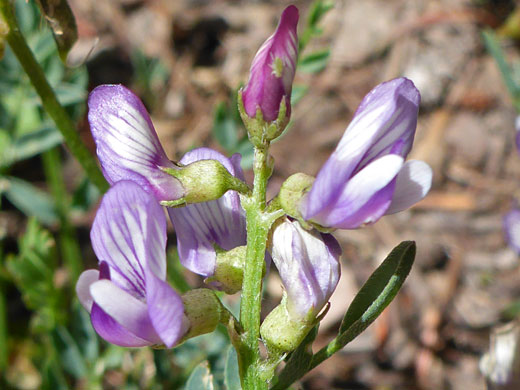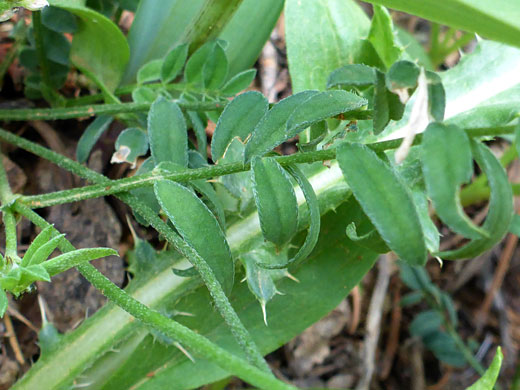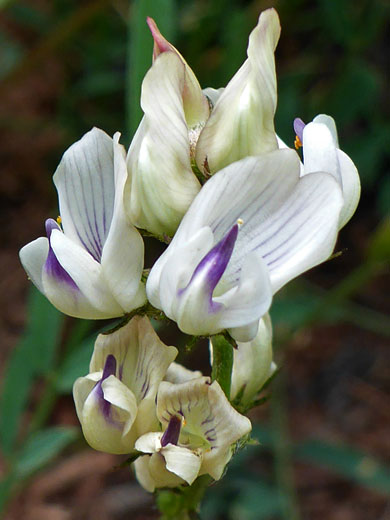Common name:
Timber milkvetch
Family:
Scientific name:
Astragalus miser
Main flower color:
Range:
Northern Arizona, north to Oregon, Idaho and Montana
Height:
Up to 15 inches
Habitat:
Grassland, meadows, sagebrush, roadsides, open woodland, from 2,000 to 11,000 feet
Leaves:
Up to 6 inches long, pinnately divided into between 7 and 21 leaflets, hairy to glabrous
Season:
June to August
Astragalus miser is widespread in the mountains of Utah, Colorado and states to the north, covering a wide range of habitats and elevations, resulting in variable characteristics; there are eight varieties.
Plants produce several stems, angled upwards or curving down, and sparsely covered by short, appressed hairs, simple or branched. Leaves are pinnately divided into a terminal leaflet and up to ten pairs of lateral leaflets, hairy at least underneath. At the base are a pair of thin stipules, fused to form a sheath. Leaflets are up to 1.3 inches long.
Flowers are arranged in a terminal spike of up to 20; they have relatively short (up to 0.2 inches), broad calyces, covered by short black (or white) hairs, and corollas about twice as long, colored white to purple, often with yellow or bluish tints. Even for white-flowered specimens, the keel always has a deep purple tip. The calyx teeth are a little shorter than the calyx tube. Fruits are short-stalked, oblong pods, up to 1 inch long, sparsely hairy to glabrous.
Plants produce several stems, angled upwards or curving down, and sparsely covered by short, appressed hairs, simple or branched. Leaves are pinnately divided into a terminal leaflet and up to ten pairs of lateral leaflets, hairy at least underneath. At the base are a pair of thin stipules, fused to form a sheath. Leaflets are up to 1.3 inches long.
Flowers are arranged in a terminal spike of up to 20; they have relatively short (up to 0.2 inches), broad calyces, covered by short black (or white) hairs, and corollas about twice as long, colored white to purple, often with yellow or bluish tints. Even for white-flowered specimens, the keel always has a deep purple tip. The calyx teeth are a little shorter than the calyx tube. Fruits are short-stalked, oblong pods, up to 1 inch long, sparsely hairy to glabrous.
All Contents © Copyright The American Southwest | Comments and Questions | Contribute | Site Map











